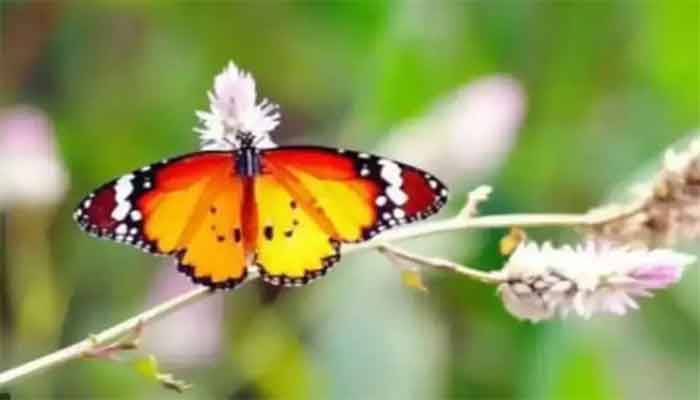
Desk Report
Publish: 25 Sep 2020, 02:17 pm

The ability of a butterfly to absorb or reflect heat from the sun with its wings could be a matter of life and death in a warming world, according to British research published Thursday calling for gardens , parks and farms to host shady, cooling-off spots.
While all butterflies are ectotherms — they can not generate their own body heat — the ability to regulate temperatures varies considerably, researchers said, reports AFP.
The study found that species struggling to moderate their body temperatures often rely on being able to survive the full heat of the sun in shaded "microclimates."
These butterflies "are likely to suffer the most from climate change and habitat loss," said lead author Andrew Bladon of the Department of Zoology at the University of Cambridge.
Researchers have said that the cooler niches they rely on have dwindled as habitat is lost and fragmented, driving a decline in the population of two-thirds of butterfly species in Britain.
This is exacerbated by extreme weather events and temperature fluctuations made worse by climate change, they said.
To measure how different butterflies cope with temperature changes, researchers captured 4,000 wild specimens of 29 species, combing across several UK sites in monthly surveys from April to September 2009 and from May to September 2018.
They recorded the behaviour of each butterfly and then — if they could catch it in their nets — took its temperature using a tiny, 0.25-millimetre thick thermometer.
The study found that larger, pale-coloured butterflies, such as the Large White or Brimstone species, are better at thermoregulation because they can angle their wings to reflect the heat of the sun either away from them or on their bodies to reach the right temperature.
– Population decline –
Researchers said that these species had either stable or growing populations.
But they found a less rosy picture among species with smaller or more colorful wings, especially among the' thermal specialists' who use shade to cool down.
According to a study published in the Journal of Animal Ecology, these species, such as the Small Copper butterfly, have suffered steeper population declines over the last 40 years.
Bladon said landscapes must become more diverse in order to protect a range of butterfly species.
“Even within a garden lawn, patches of grass can be left to grow longer — these areas will provide cooler, shady places for many species of butterfly,” he said in a university press release.
“We also need to protect features that break up the monotony of farm landscapes, like hedgerows, ditches, and patches of woodland.”
Insects including butterflies are the world’s top pollinators — 75 percent of top global food crops depend on animal pollination, according to the UN.
– Food fears –
Researchers from the University of Michigan found in another study also published on Thursday that projected increases in temperature may lead to alterations in the wing shape of North American Monarch Butterflies and may impede their annual migration.
Researchers reared Monarch larvae at 25 degrees Celsius or an elevated 28C feeding them on three species of milkweed — common, swamp and tropical.
Each of these contains cardenolides, a steroid stored as a chemical defence against predators by Monarch butterfly larvae and an antibiotic against parasites that may be toxic at higher concentrations, researchers said.
In tropical milkweed, which has proliferated due to warming temperatures, the levels of Cardenolide are particularly high.
The researchers found that larvae reared in warmer temperatures flew for shorter periods and over a reduced distance, while also expending more energy per distance measured.
The study, published in the Journal of Insect Conservation, also found that those that had been fed the cardenolide-rich tropical milkweed had shorter and wider forewings.
Researchers said these rounder wings were less efficient for long distance flight than long narrow wings that can be used for energy-saving gliding, concluding that this could hamper annual migration.
Most Monarchs in North America travel several thousand kilometres to spend the winter in Mexico where they mate.
The study said monarch populations had seen a “drastic” decline in the last decades, with those migrating east dropping around 80 percent, while numbers migrating westward have declined by 99 percent since the 1980s.
Subscribe Shampratik Deshkal Youtube Channel
© 2024 Shampratik Deshkal All Rights Reserved. Design & Developed By Root Soft Bangladesh